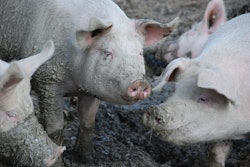Export Sales Announcement
- Private exporters reported to the U.S. Department of Agriculture export sales of 544,000 metric tons of soybeans for delivery to China during the 2018/2019 marketing year.
USDA’s June Hogs and Pigs Report Shows More Supply Growth
- All Hogs and Pigs reported on June 1 were +3.6% YoY. Hogs kept for breeding: +1.4% YoY and the March-May pig crop was +3.9% YoY.
- The pigs per litter for the sows farrowed during the March-May quarter was +3.5% from 2018 and was a record move higher. Based on this historical increase in sow efficiency and productivity, the pigs born during the March-May quarter was up 3.7% compared to report expectations that averaged up 2.6%.
- The biggest year-over-year percentage increase in pigs per litter since 2015 was a 1.8% increase in the summer of 2016 with most quarters posting YoY of 1.0% or less. Based on the sow productivity gains, Q4 ’19 slaughter estimates will increase.
- March-May farrowings were 3.119 million sows during the quarter and were slightly lower from 2018. The YoY decline was a surprise as low corn prices had been helping producer profitability.
- Farrowing intentions for June-August quarter were 3.185 million sows, -.5% YoY, while farrowing intentions for September-November were unchanged from a year earlier.
- What It Means For The US Farmer: At FBN we believe that the expansion of the breeding herd combined with what appears to be moderating farrowing intentions for the balance of 2019 can be directly attributed to higher input prices. The constant increases in sow efficiency continues to impress but at FBN we will be monitoring the futures pig crops to determine the potential demand for corn and soybean meal.
India’s Monsoon Could Be Weak and Produce Below Average Rains
- India's monsoon rains have trended below average for the fourth straight week raising concerns about major crop production and the potential impact on the nation's economy.
- India received 24% less rainfall than the 50-year average in the week ended on June 26. In India's key soybean and rapeseed growing regions, Madhya Pradesh, the rain deficit is as high as 69%.
- The monsoon has so far delivered 36% less rainfall than normal since the start of the season on June 1 due to a delay in the onset of the seasonal rains.
- India’s 2019 planting pace of rice, soybeans and corn is lagging. Farmers had planted summer-sown crops on 9.1 million hectares as of June 21, down 12.5% YoY.
- India needs a good monsoon this year because 2018 drought was severe enough to drain water supplies and reservoirs.
- The monsoon rains are critical to India's agricultural economy and crop production. About 55% of India's arable land is rain-fed, and agriculture makes up about 15% of a $2.5 trillion economy that is Asia's third-biggest.
- What It Means For The US Farmer: At FBN we believe that a continuing drought in India has the potential to be a net benefit for the U.S. soybean export program. Because India is a net exporter of soybean meal into China and other parts of southeast Asia, a supply shock in India could stimulate increased demand for U.S. soybean meal.
The risk of trading futures, hedging, and speculating can be substantial. FBN BR LLC (NFA ID: 0508695)










